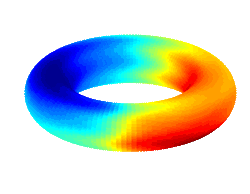Links The Human Music Memory Map The Groove Project Musical Spaces Templeton Advanced Research Program


Projects
Music has been shown to inspire reminiscence and help us relive the past, regardless of age or cognitive impairment. However, it is unclear whether music provides a unique advantage for this purpose. This project examines memory and nostalgia for advertisements throughout the decades by using advertisements to study whether musical stimuli (jingles) uniquely help us remember and relive the past compared to matching verbal (slogans) and visual (logos) stimuli across the lifespan.
You can contribute to our understanding of music, memory, and nostalgia across the lifespan by participating in the Jingle Project!
The Human Music Memory Map Project
Music, memories, and emotions are intertwined for so many people. Together, they create rich and meaningful experiences for improved psychological well-being, and provide unique opportunities for understanding how the human brain works. Whether it is through a social website for sharing music and memories, or through brain imaging studies of music-evoked remembering, our lab is devising creative ways aimed at understanding why hearing that song from the 8th grade dance elicits such awkward nostalgia ... and why music from the past lights up the lives of Alzheimer's patients ...
Learn about some of the research we've done and participate in Music-Evoked Autobiographical Memory (MEAM) Central!
Music often induces in us the irresistable urge to move, and there's arguably no feeling that's better than feeling like you're one with the music and those with whom you are making music. Our goal is to understand the psychology and neuroscience behind the somewhat ephemeral concept and potent musical experience of being "in the groove."
Music functions in three broadly defined spaces. Understanding the varieties of music and musical experience necessitates exploration of each of these fascinating spaces and their interactions.
- Tonal – One musical structure we are trying to gain an understanding of is the torus (the ubiquitous icon around our site), which we use to model tonal movement in music ... peek inside to see animations!
- Temporal – We have less of an understanding of rhythmic space. We are working on an oscillator model that lets one compare behavioral data directly with the music model, and have used this model to try to examine the phenomenon of being in the groove.
- Timbral – Timbre depends on how the frequency content of a sound changes through time, thus giving it its identity. We have been working on understanding how many complex sounds can be held in mind at the same time.
Insofar as possible, we like to understand our physiological data using analyses of features that derive directly from actual audio recordings. If you would like to use our programs for your own analyses, please visit the respective project locations.
Templeton Advanced Research Program

